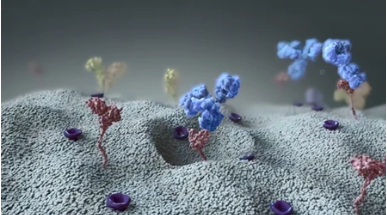Pancreatic Cancer Treatment Strategies

Pancreatic cancer (PC) is a recalcitrant and aggressive disease characterized by high incidence and poor prognosis. The mortality rate of PC is rapidly increasing and PC is expected to be the second most common of all malignant tumors by 2030. Currently, surgery and chemotherapy are still the main treatments for pancreatic cancer. However, pancreatic cancer is aggressive and the early symptoms are not obvious, and most patients are in the middle and late stages when diagnosed, and less than 20% of patients are eligible for surgery. For patients who cannot be surgically removed, chemotherapy is the main treatment, but the efficacy of chemotherapy is not satisfactory and fails to improve the life expectancy of patients.
Why do PC remain difficult to treat?
- PC is usually asymptomatic and aggressive, and most patients are in an advanced or metastatic state at the time of diagnosis.
- There is a lack of an accurate and inexpensive screening method that is applicable to the general population.
- Postoperative recurrence rates are high locally (60%) and systemically (90%), and only 15-20% of patients can be surgically removed.
- Compared to other cancer types, PC has a unique tumor microenvironment (TME) that limits immune cell infiltration and drug delivery, posing a therapeutic challenge for PC.
PC treatment strategies
Over the past three decades, PC has made few breakthroughs in practice compared to other cancers. Therefore, new treatment options for improvement are highly desirable. Currently, new therapeutic options such as next-generation targeted therapies, tumor microenvironment-targeted therapies, and liposomal therapies are in hot development. Here, we give an overview of some treatment strategies.

- Drugs targeting the DNA damage-repair (DDR) pathway
Dysfunctional DNA repair mechanisms are necessary to maintain the integrity of cellular DNA and ultimately lead to the accumulation of somatic mutations that increase the risk of cancer. There are a number of inherited deficiency of genes identified, and are linked to the predisposition of developing PC, such as BRCA1/2, ATM, and PALB2. Deficient DDR mechanisms can enhance immune responses in multiple ways, providing a theoretical basis for the combination of DDR-targeted agents and immunotherapy. There is a growing number of anti-tumor drugs that use DDR deficiency, some of which are under investigation, offering increasing therapeutic possibilities for PC patients.
- Targeting cancer metabolism
Changes in the way nutrients are metabolized contribute to the development and progression of PC, but the complex relationship between cancer itself and the patient's body is unclear. There are a large number of metabolic alterations in cancer cells, such as alterations in pH balance and related changes in ion transport systems, which could be potential targets for therapy. - Targeting tumor microenvironment
PC has a peculiar tumor microenvironment (TME), which is characterized by complex stroma and high heterogeneity cellular populations. Specifically, TME consists of extracellular matrix, stromal cells, and cancer cells, such as fibroblasts, myofibroblasts, pancreatic stellate cells (PSCs), immune cells, myeloid-derived suppressor cells (MDSCs), and tumor-associated macrophages (TAMs). TME acts as a mechanical barrier around tumors, promoting tumor growth and metastatic spread and impeding proper vascularization, limiting immune cell infiltration and drug delivery. Therefore, targeting the tumor microenvironment may be an effective strategy to overcome tumor drug resistance and promote immune infiltration in PC. - Immunotherapy
Currently, immunotherapy is not effective in PC, mainly because immunosuppressive TME acts as a barrier to effector immune cell infiltration. Many studies are still underway, including monoclonal antibodies, cancer vaccines, drugs that target immune system checkpoints, and so on.
Learn more:drugs targeting the DNA DDR pathway
- Questions and Answers
- Opinion
- Motivational and Inspiring Story
- Technology
- Live and Let live
- Focus
- Geopolitics
- Military-Arms/Equipment
- Security
- Economy
- Beasts of Nations
- Machine Tools-The “Mother Industry”
- Art
- Causes
- Crafts
- Dance
- Drinks
- Film/Movie
- Fitness
- Food
- Games
- Gardening
- Health
- Home
- Literature
- Music
- Networking
- Other
- Party
- Religion
- Shopping
- Sports
- Theater
- Health and Wellness
- News
- Culture

